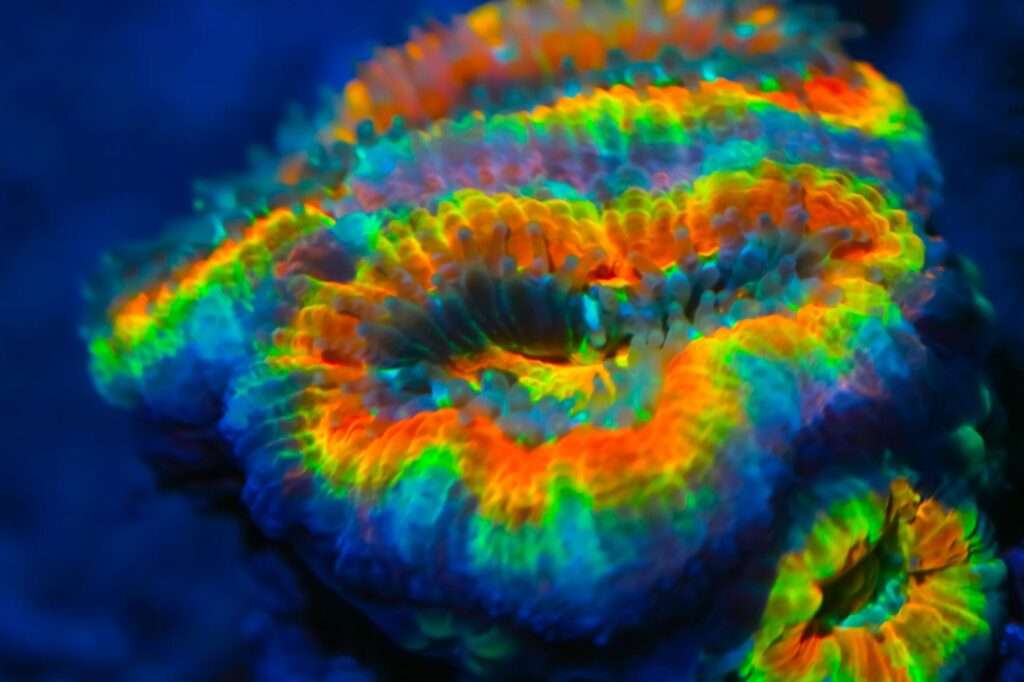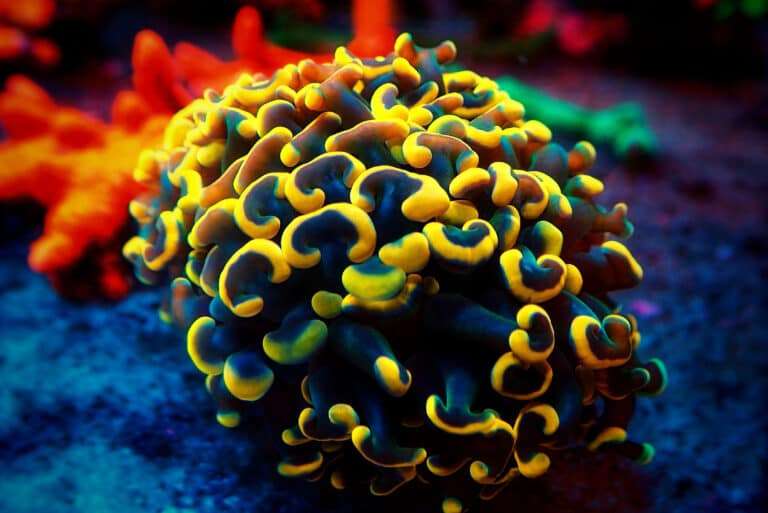
It is a species of Euphyllia that is not common in Australia. But it does resemble Euphyllia ancora, a coral that is a close relative. When you look closely, you can distinguish the Hammer Coral from other names like the Frogspawn Coral E. divisa or the Anchor Coral, which are incorrect.
The only difference between the Hammer coral and the Anchor coral is that the Hammer coral polyps have hammer- or “T”-shaped points. The points of the Anchor corals are not in a “T” shape; instead, they are semicircular or sausage-shaped. The tip of the Hammer Coral can be curved even though it is straighter and flatter. This genus also includes some very attractive branching anchor corals like Euphyllia parancora.
Habitat
Spengler wrote a description of the Hammer Coral, Euphyllia fimbriata, in 1799. Other names for this coral include Frogspawn Coral and Anchor Coral, both of which are incorrect. In the Philippines’ Western Pacific, you can find E. fimbriata. In turbid but calm waters, colonies of E. fimbriata can be found. They take use of indirect bright light and can be found at depths of up to 131 feet (40 m). To assist them catch small prey and protect themselves from predators, they have stinging cells.
Morphology
The Hammer’s identification Coral E. fimbriata is more strongly influenced by the polyp’s morphology than by its delicate skeletal structure. With the ability to fully retract into the skeleton, the polyps form enormous colonies with corallite walls growing on the outer borders. Only partially throughout the night do polyps extend. The Hammer Coral has tentacles with “T” or hammer-shaped tips. The tentacles might have tips that are cream, green, or brown in hue. The length of each tentacle can increase by two to three times when the animal is feeding. Some colonies can grow to be over 3 feet tall (1 m). Unknown life expectancy.
In Captivity

- Feeding
Euphyllia corals have evolved a number of feeding techniques. Many of its nutrients are obtained through a symbiotic interaction with a sea algae called zooxanthellae. They can also take in dissolved organic substances and planktonic creatures as well as food particles from the water column. Surprisingly, these corals can also consume significantly bigger portions of food. Feed the coral the whole organism by chopping or dicing up whole fish or shrimp. Because different animal parts have varied nutritional characteristics, feeding your Euphyllia in this manner will provide positive effects. Since these corals are constantly hungry, feeding them as needed with a variety of meals is beneficial.
- Social Interactions and Compatibility
Euphyllia corals should be placed far from any other corals since they might be aggressive if they come in contact with them. The Hammer Coral is kind to members of its own genus but aggressive against members of other genera in its family. Large aquariums with extensive collections of soft corals, particularly some Sinularia species, seem to be problematic for the E. fimbriata.
Table





